This Auburn Fire Department consists of a force of 4 Platoon Chiefs and 56 firefighters (15 per platoon) that protects roughly 24,000 residents. This program is designed to protect and save lives and property from fire and other emergencies such as explosions, high/low angle rescue, confined space, hazardous material incidents, electrical problems, water removal, carbon monoxide problems and bomb threats. It is also designed to provide Emergency Medical Service and emergency medical care transport. The assigned personnel also provide essential, non-emergency functions such as the maintenance of stations, vehicles, tools and equipment. They conduct fire prevention and safety inspections, assist with public fire education and train on a regular schedule in order to maintain skills and knowledge to perform the emergency and non-emergency functions.
There are no state laws or federal regulations that require municipalities to provide fire protection or maintain a hazardous materials response capability; however, citizens within the community place a demand on city government to be responsive to the need for public safety protection. Without adequate fire protection, the cost of fire insurance premiums would be astronomical thus creating a negative economic impact on the entire community. State law and federal regulations require that emergency responders be provided with training and personal protective equipment consistent and appropriate to the level of fire suppression and hazardous material emergency response expected of them. Federal regulations require all emergency responders who have the potential for being involved in a hazardous materials incident to be trained to the First Responder Awareness Level and First Responder Operations Level and to establish incident command at hazardous materials incidents. State Law mandates that all firefighters who respond to emergency medical calls as a First Responder maintain current CPR and First Responder certification.
| Mission Statement |
|
Mission Statement
It is the mission of the Auburn Fire/Rescue Department, through the delivery of programs and services, to protect life, property and the environment from the adverse effects of fire, sudden medical emergencies, environmental and other hazards both man made and natural. All programs and services will be delivered with integrity, compassion, enthusiasm, respect and without prejudice.
.jpg)
|
| Value Statement |
|
Value Statement
Through commitment to innovation, service, and excellence, we will strive to be leaders in fire, life safety, and emergency medical services, so that we remain critical to maintaining and improving the community’s quality of life. We will offer a professional approach including appearance and behavior, respectful attitude, compassion, and quality service to the community. We will recognize each firefighter as a valued member of the Auburn Fire/Rescue Department by valuing input, showing compassion, providing open communications, and supporting the team approach. In the end; prevent harm, survive, and be nice.
.jpg)
|
| History of the Fire Service |
|
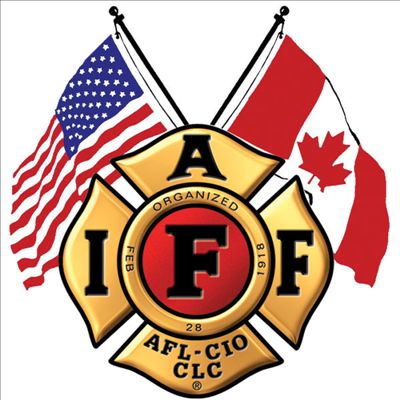 Normal
0
false
false
false
MicrosoftInternetExplorer4
st1\:*{behavior:url(#ieooui) }
/* Style Definitions */
table.MsoNormalTable
{mso-style-name:"Table Normal";
mso-tstyle-rowband-size:0;
mso-tstyle-colband-size:0;
mso-style-noshow:yes;
mso-style-parent:"";
mso-padding-alt:0in 5.4pt 0in 5.
Normal
0
false
false
false
MicrosoftInternetExplorer4
st1\:*{behavior:url(#ieooui) }
/* Style Definitions */
table.MsoNormalTable
{mso-style-name:"Table Normal";
mso-tstyle-rowband-size:0;
mso-tstyle-colband-size:0;
mso-style-noshow:yes;
mso-style-parent:"";
mso-padding-alt:0in 5.4pt 0in 5.
|
| The History of the Maltese Cross |
|
History of the Maltese Cross
The badge of a firefighter is the Maltese Cross. This Maltese Cross is a symbol of protection and a badge of honor. Its story is hundreds of years old.
When a courageous band of crusaders known as the Knights of St.
|
| History of the Fire Dalmatians |
|
|
History of the Fire Dalmatians
Dalmatians have long since been the dog of the firehouse and these days are the leading mascot in a firehouse. In times when horses did the work to take the firemen to the fires, the Dalmatians were the main dogs that paved the way to help them reach the fire. These dogs and horses got along very well, so the dogs were trained to be the ones in the front, letting people know to get out of the way. He was a guide to the horses and the ones who worked the fires making these dogs earn a honorary position inside firehouses.
Dalmatians have a history of the ones who are often used for work of a serious nature. During wars, they have been the ones who alerted when things were not right. They were the ones who worked as draft dogs, hound dogs, shepherds, hunters, retrievers, and so much more. They are very smart and can remember more than any other dog. The speed that Dalmatians have is phenomenal and has a remarkable endurance level. They have no fear of big animals, like horses, which makes them the best breed for this kind of job.
They are known as coach dogs and were used mainly before the twentieth century, in other countries, such as Scotland, England, and Wales. It was the wealthy who took the most interest in them. They gave the wealthy the added touch to give them the feeling of feeling superior. They were an important part of any place that they were at and seemed to keep the peace if they were kept in a stable with horses. They were the best breed to keep company with the horse and often would be seen running along them for long periods. They were often also used to guard against theft of any kind.
At a time when some of the fire companies were volunteer or operated privately, these dogs were the ones that were picked first. These dogs were an excellent choice to be had, since they did practically everything asked of them, from protection to whatever else was needed of them. Dalmatians were a source of pride at the firehouses that they were at and the firefighters were able to show them off. These dogs worked with the firefighters until cars and fire engines were invented. This is when they become the mascot of the fire companies and also companions to those who did a service for their country. Dalmatians, these spotted black and white dogs, are one of the most well known dogs in history and they served their country well as a dog who served the firehouses.
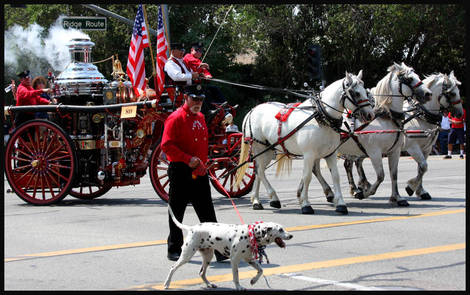
Citied: Fire Dalmatians
|
| St. Florian, Patron Saint of Firefighters |
|
St. Florian, Patron Saint of Firefighter
St. Florian was an officer of the Roman army, who occupied a high post in what is now Austria. He is said to have stopped an entire town from burning by throwing a single bucket of water on the blaze, and thus his association with firefighters and those who protect us from fire. When ordered to execute a group of Christians, he refused, professed his own faith, and was martyred. He was twice scourged, half-flayed alive, set on fire, and thrown into the river Enns with a stone around his neck.
His body was recovered and buried by a pious woman and eventually moved to the Augustinian Abbey of St. Florian. Since that time, St. Florian has been regarded as a patron of Firefighters, against battles, against fire, Austria, barrel-makers, brewers, chimney sweeps, coopers, drowning, fire prevention, floods, harvests, Linz Austria, Poland and soap-boilers. There has been popular devotion to St. Florian in many parts of central Europe, and the tradition as to his martyrdom, not far from the spot where the Enns flows into the Danube, is ancient and reliable. Many miracles of healing are attributed to his intercession and he is invoked as a powerful protector in danger from fire or water.

Citied: St. Florian
|
| Why Are Fire Trucks Red |
|
|
Why are fire trucks red?
The most widely-accepted reason that fire engines are painted red dates back to the 1800s -- a time when there was a lot of competition between the fire brigades of neighboring cities and towns. The firefighters of each brigade took great pride in their pumps. Each brigade wanted their rig to stand out by being the cleanest, having the most brass, or being a regal color. Because red was the most expensive color, that's the color most crews choose to paint the fire apparatus.
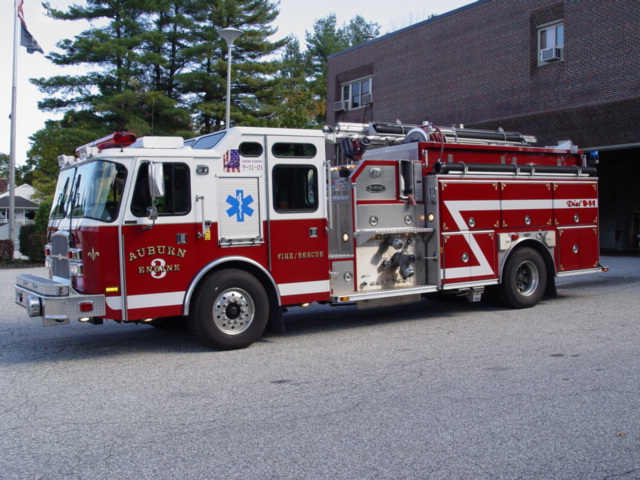
Other sources cite the tradition of painting fire engines red going back to the early 1920's. Henry Ford wanted to make cars as inexpensively as possible and only offered cars in one color: black. With all of these black vehicles on the road, the fire service began painting their vehicles red in an effort to stand out.
Today, just as you have many more choices of colors available to you for your vehicle, so do the fire engine manufacturers, and it is not uncommon to see white, yellow, blue, orange, green, or even black fire engines, in addition to red. And while some studies hint that colors such as lime-green may be more visible to the public than traditional red, the vast majority of fire departments continue to use red fire engines -- a color instantly recognized by everyone as that of a fire engine.

Source: http://www.scituatefire.org/why_are_fire_trucks_red.htm
|
| Stations & Apparatus |
|
|
The Auburn Fire Department operates out of three different fire stations:
Auburn Fire Headquarters: 550 Minot Ave
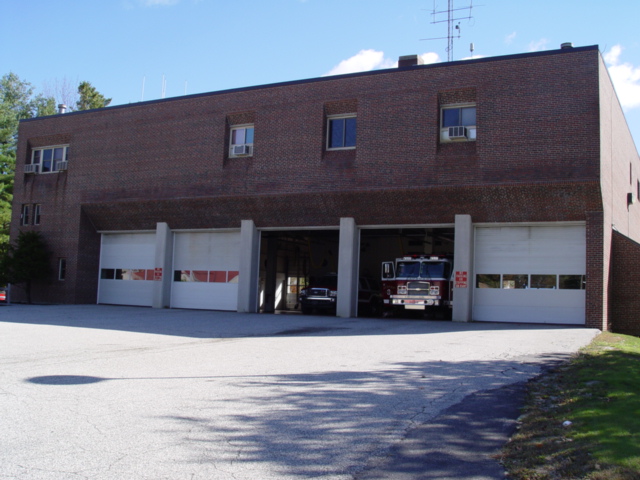
Headquarters staff a Battalion Chief, Captain, Lieutenant, and two firefighters that staff Engine 3, 315 and 316(The forestry unit was taken Out of Service in November 2010).
Engine-3 315 "Command Vehicle"
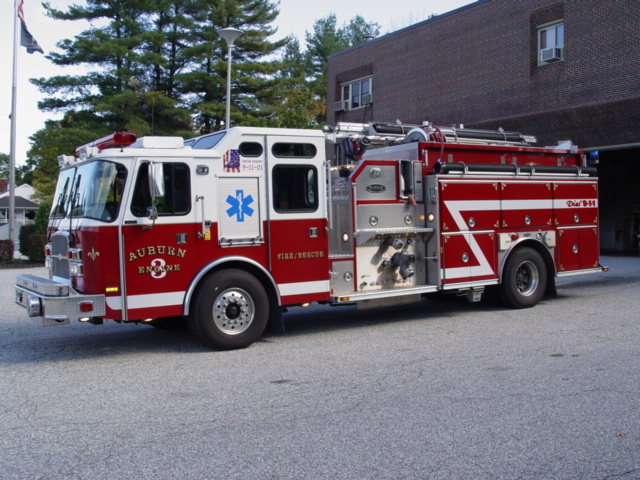 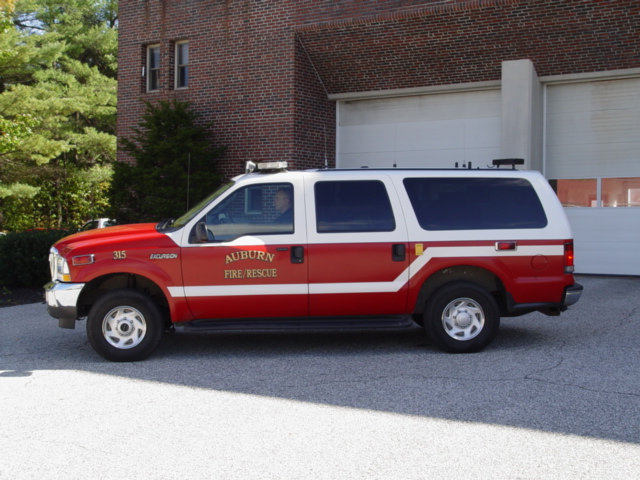
Engine 1 (Spare Engine) Utility 316
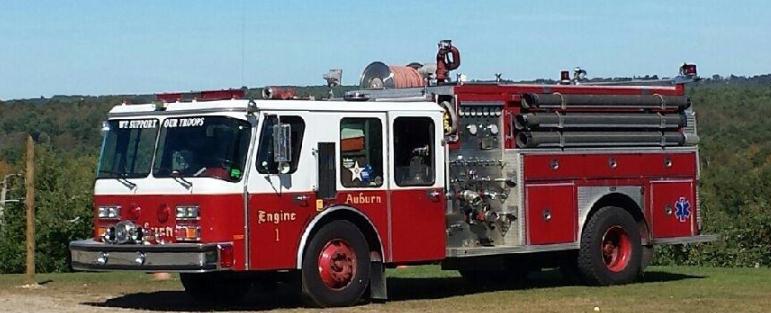 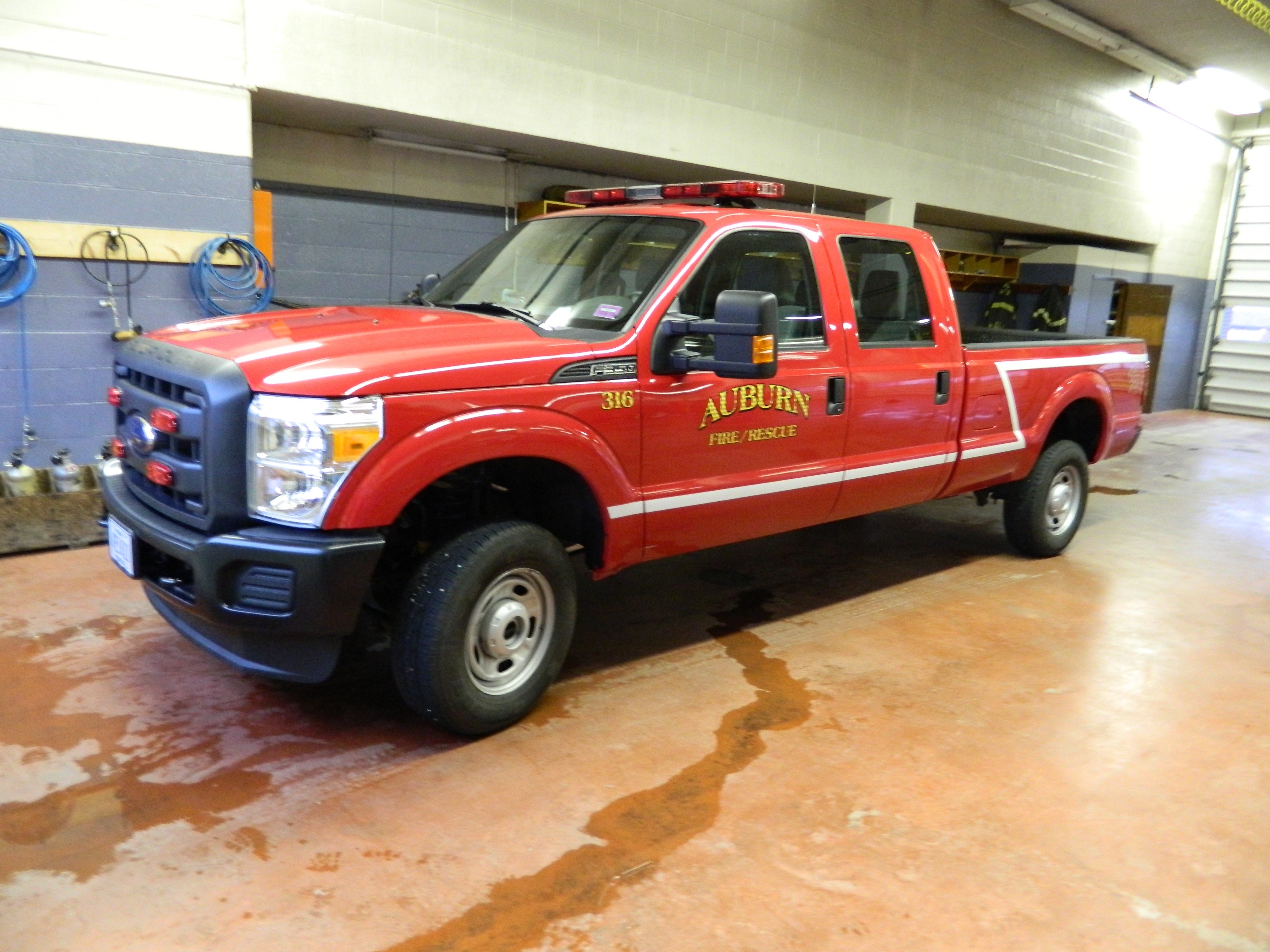
Engine 3 is a 2006 E-One Cyclone II Cab with a 1750 GPM Hale pump. This truck is equipped with a full set of Amkus extrication tools, a CAFS system and carries 1000 gallons of water on it. 315 is a 2004 Ford Excursion that is eqiupped with the needed equipment and materials for a commander to operate and run a variety of emergency scenes safely, proficiently, and effectively. Engine 1 is a 1988 E-One with a 1500 Hale pump, 60 gallons of Class B Foam and 1000 gallon water tank. 316 is a 2011 F-350 that is used as a utility piece. During the spring, summer, and fall months the truck carries our forestry equipment. This truck also assists during large emergency scenes by transporting equipment, gear, and personnel.
Engine 5/ Tower 1: 651 Center Street
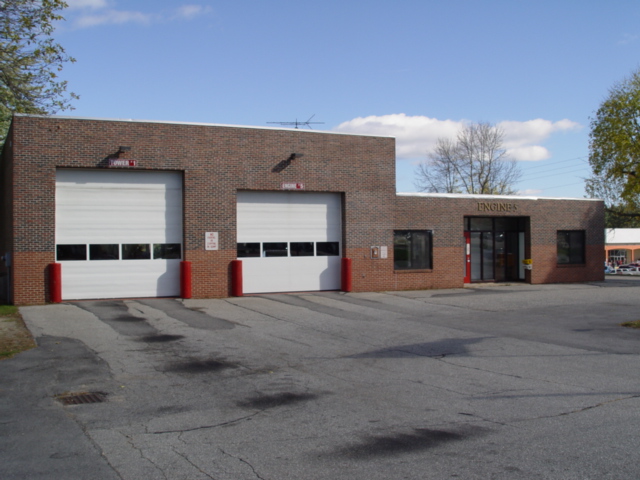
Center Street Station has Engine 5, Tower 1, 317 (utility truck), Rescue 1 (Special Response Truck), and Marine 1 which is all manned by two Lieutenant and five firefighters.
Engine 5 Tower 1
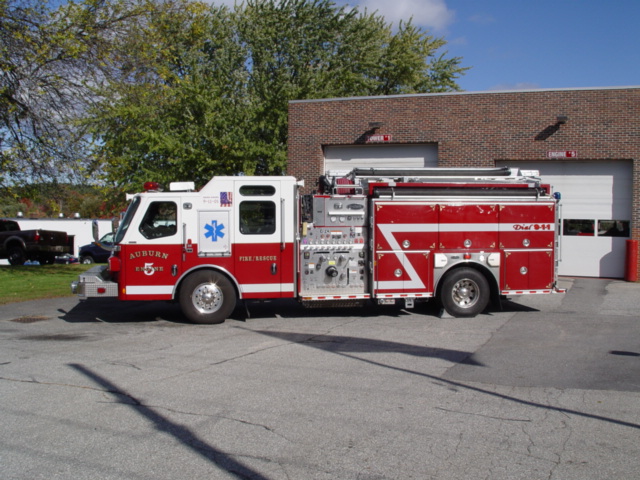 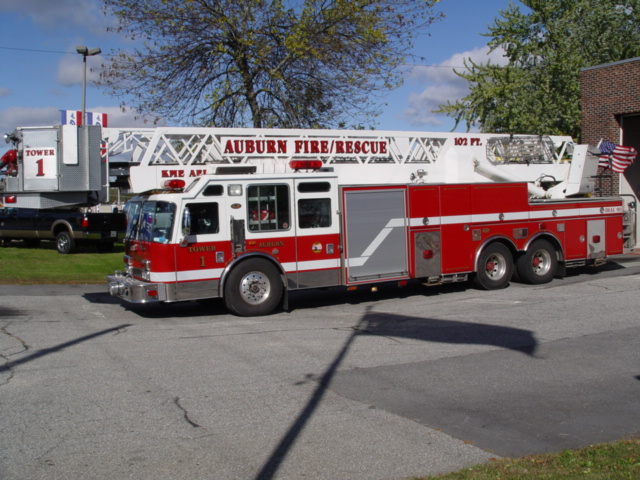
Rescue 1 317 Marine-1
 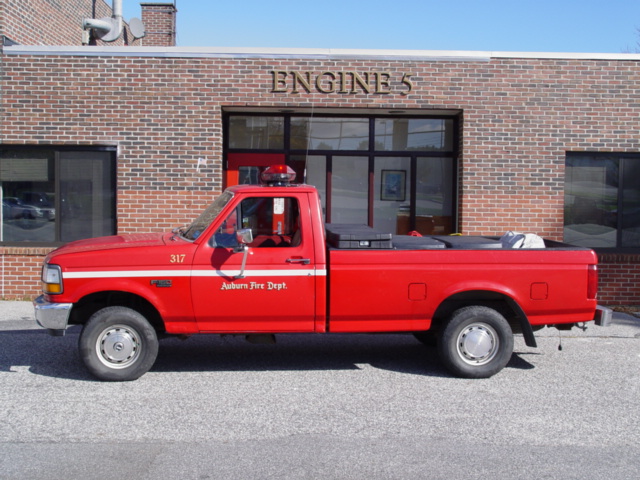 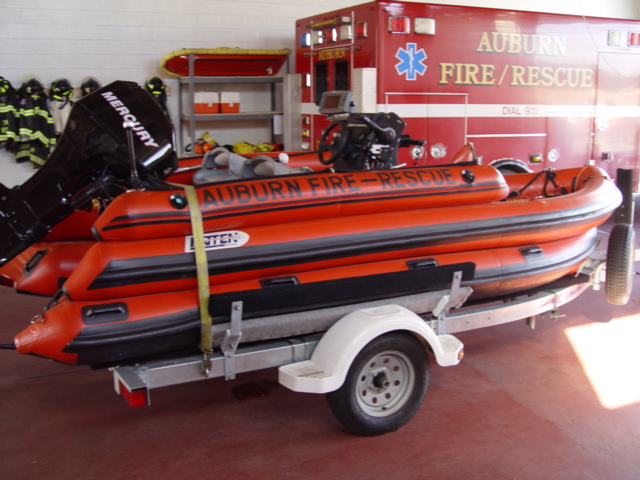
Eninge 5 is a 2008 E-One Quest Cab with a 1750 Hale Pump and 1,000 gallon water tank. This truck is equipped with a CAFS system along with a set of Amruks extrication equipment and other tools that are needed to perform fire fighting tasks. Tower 1 is 2004 KME rear mounted 102' aerial truck that has an assortment of ventilation, rescue, and salvage equipment on it. Rescue 1 is a GMC truck that carries additional equipment for special calls. These calls include trench rescues, low and high angle rope rescues, and additional airbag and cribbing equipment. This truck is not staffed however the on duty crews, if deemed that the truck is needed, will staff it. This was the formal "Rescue 1" that provided paramedic services to the City of Auburn but was taken out of service in 2010.
Engine 2: 180 South Main Street
 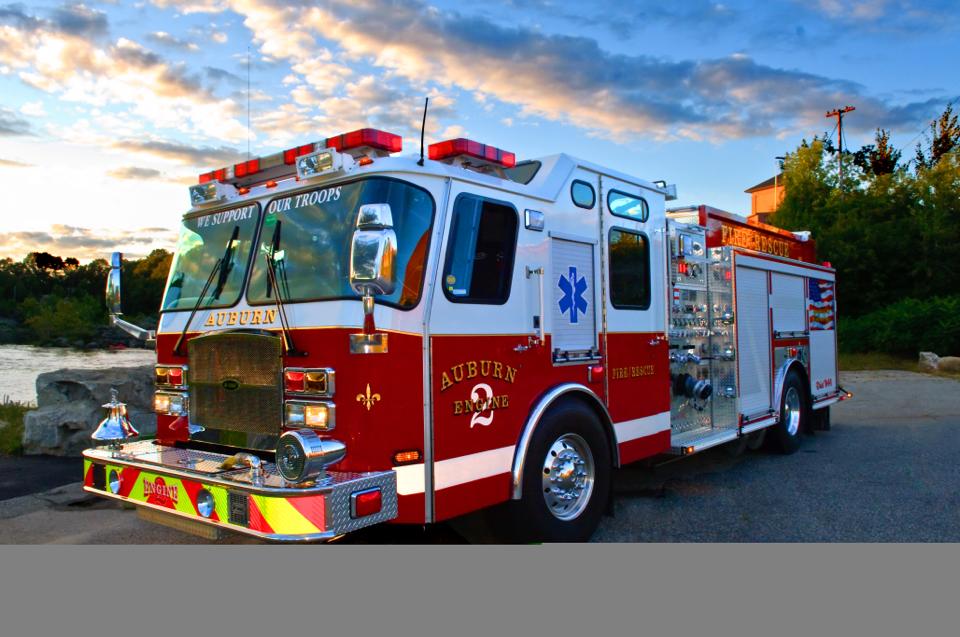
Engine 2 Station is located at 180 South Main Street. It recently placed into service a 2013 E-One Custome pump with a 1750 Hale C.A.F.S. pump with 1,000 gallons of water. This truck is equipped with 30 gallons of Class A and 50 gallons of Class B foam along with many other specific tools relating to Auburn. This station is staffed with one Lieutenant and two firefighters.
Retired Appartus

1999 American LaFrance Eagle with a 1,500 two stage pump
|
| The History of the AFD |
|
A Brief Historical Outline of the Auburn Fire Department
The first fire protection brigade was formed to protect the Auburn/Lewiston area in 1849. They called themselves the Lewiston Falls Village Corporation. The corporation placed Excelsior #2 (first fire apparatus) on the west bank of the Androscoggin River.
|
| Staff |
|
Members of the
Auburn Fire Department
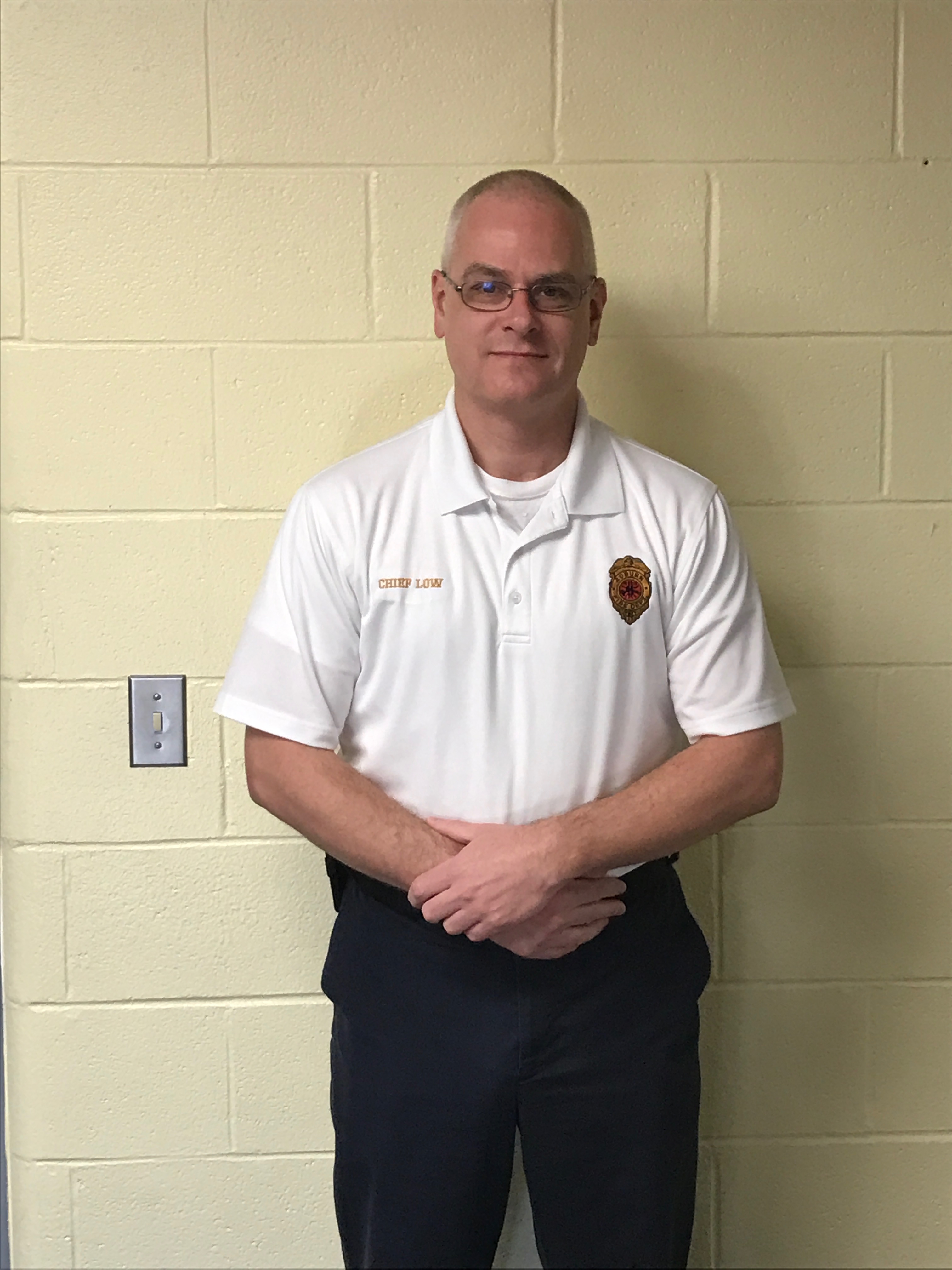
Chief Geoff Low

Deputy Chief Allen
 
Fire/EMS Support Specialist Office Manager
Battalion “A” Battalion “B” Battalion “C” Battalion “D”
   
BC Milligan BC Richard BC Flanagan BC Hunter
Engine 3's Crews
   
Capt. Keene Capt.Pray Capt. Scott Capt. Fifield
 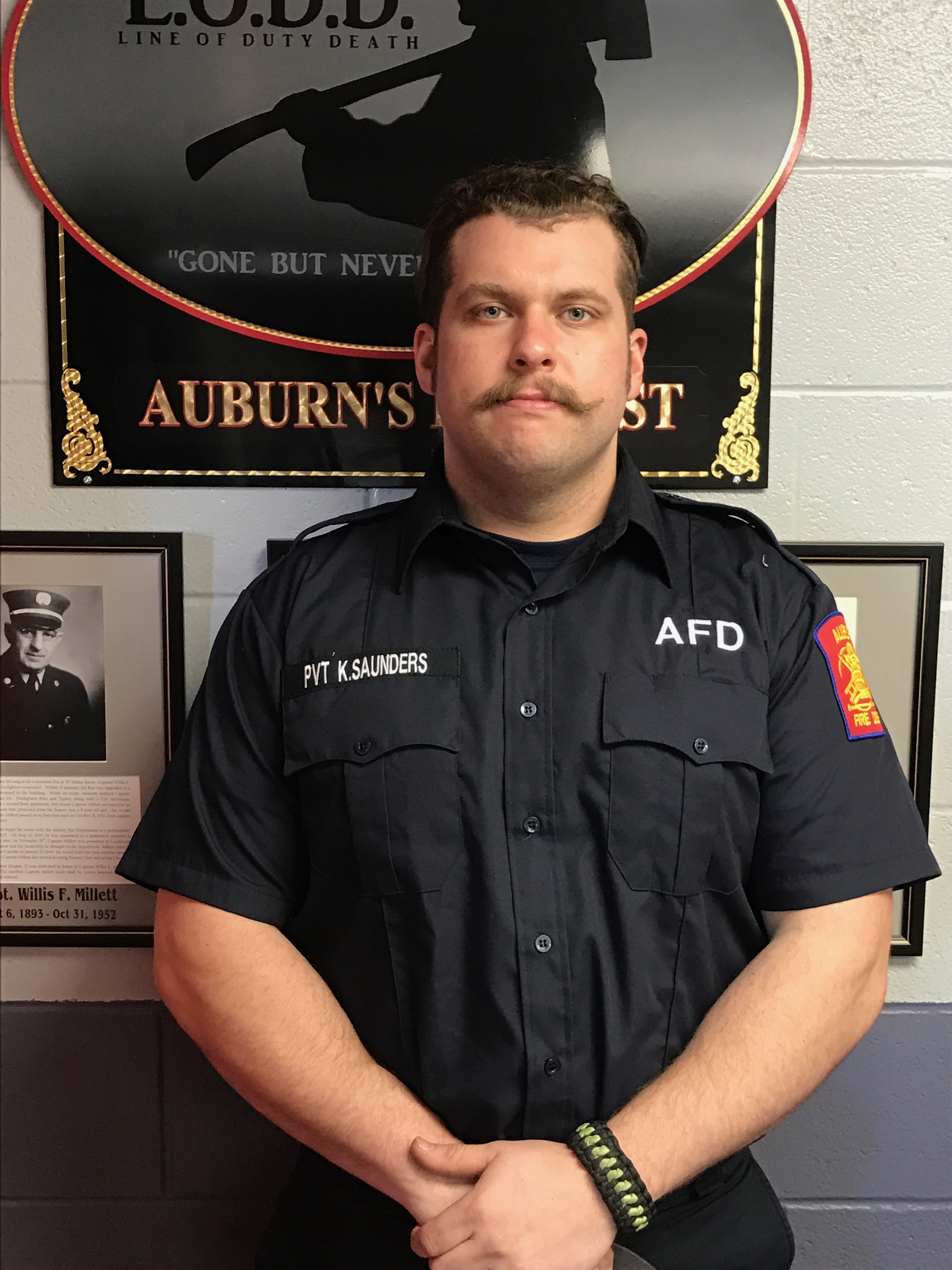  
Pvt. Schadtle Pvt. K. Saunders Pvt. Printup Pvt. T. Hnter
 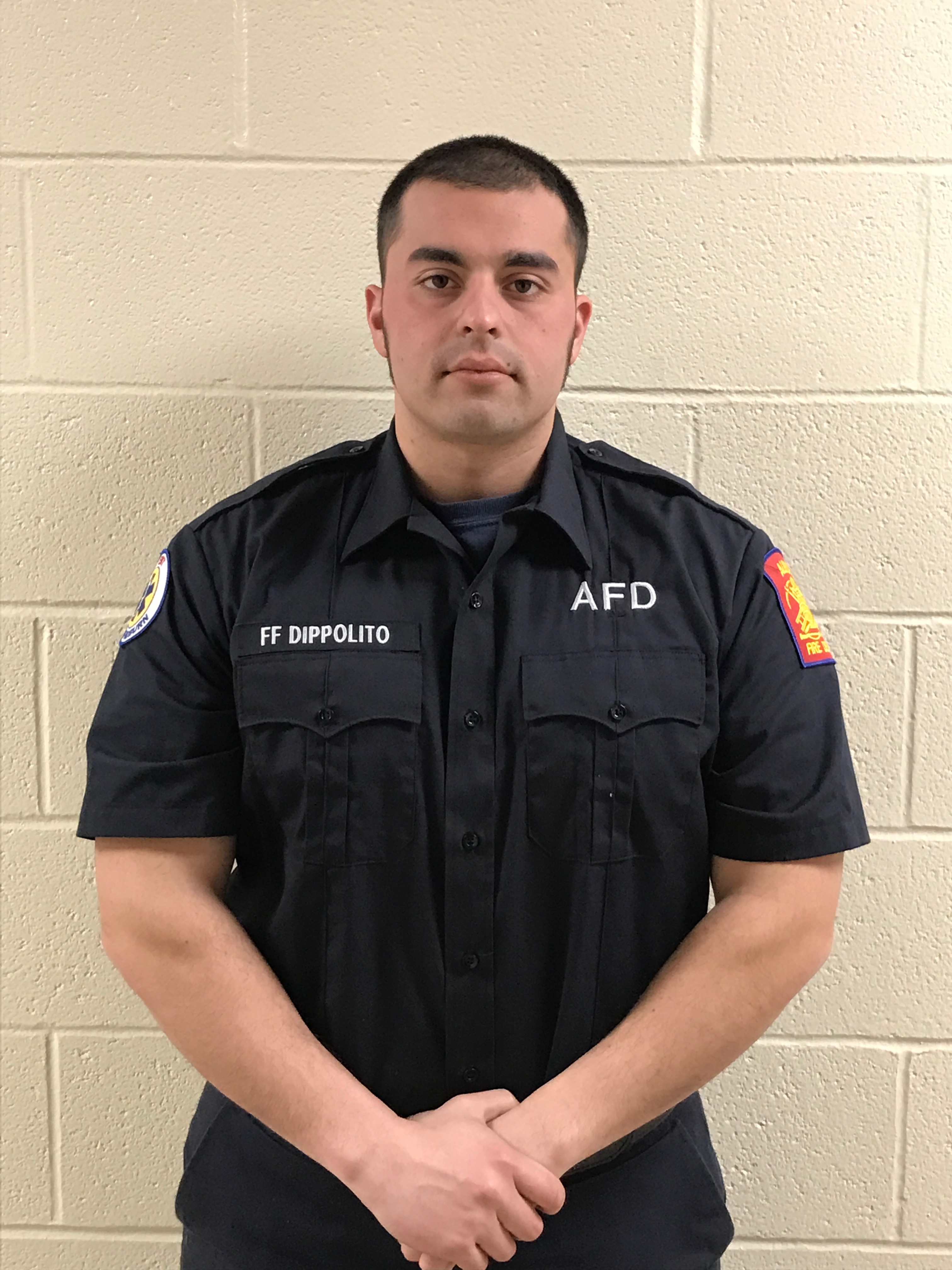  
Pvt. Demers Pvt. Dippolito Pvt.Flanders Pvt. Poremby
Rescue 3's Crews
   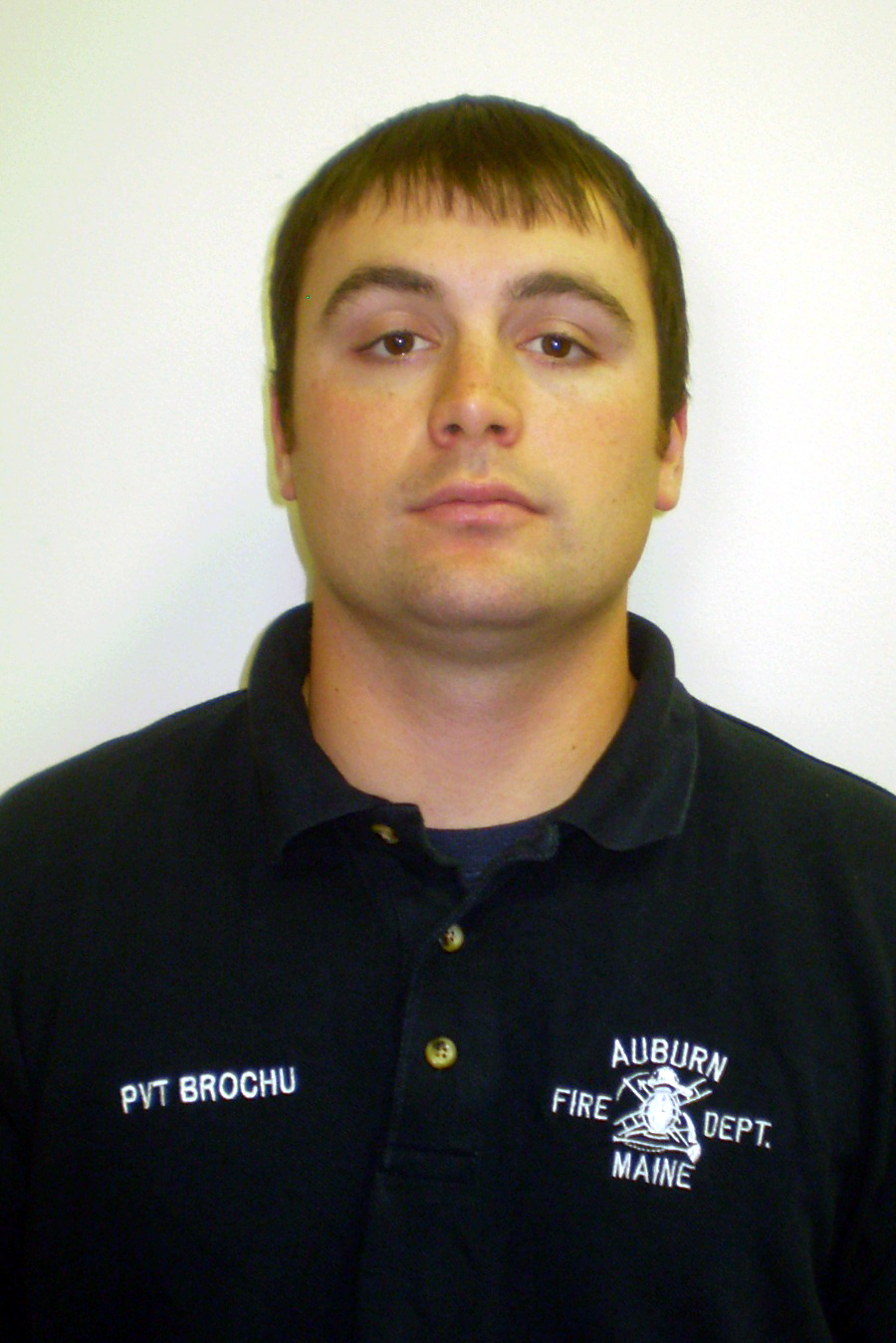
Lt. Dumont Lt. Beale Lt. Moretto Lt.Brochu
  
Pvt. Coombs Pvt. Michaud Pvt. Harris Pvt. R. Arsenault
Truck 1's Crews
   
Lt. Dionne Lt. Boulet Lt. Roy Lt. Gurschick
   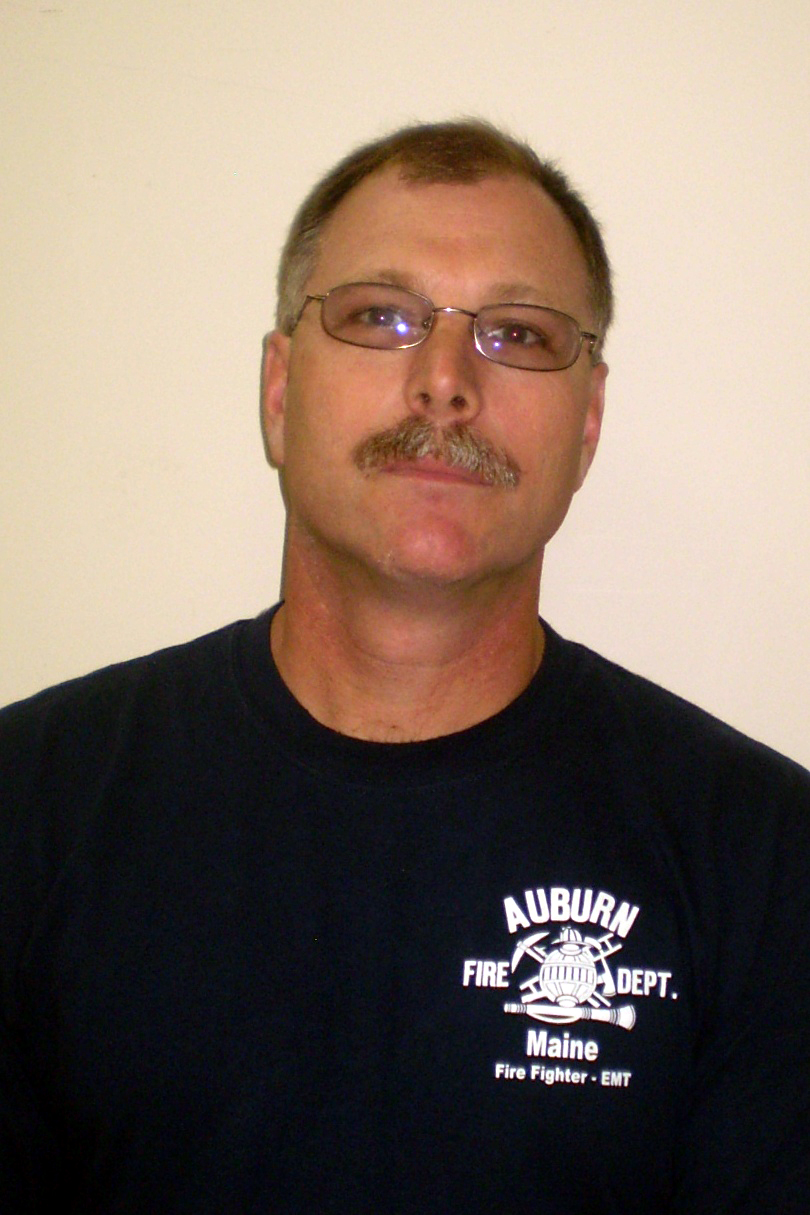
Pvt. Washburn Pvt. Beaule Pvt. Haskell Pvt. Pilote
   
Pvt. Martin Pvt. Jones Pvt. Burnham Pvt. S. Smith
 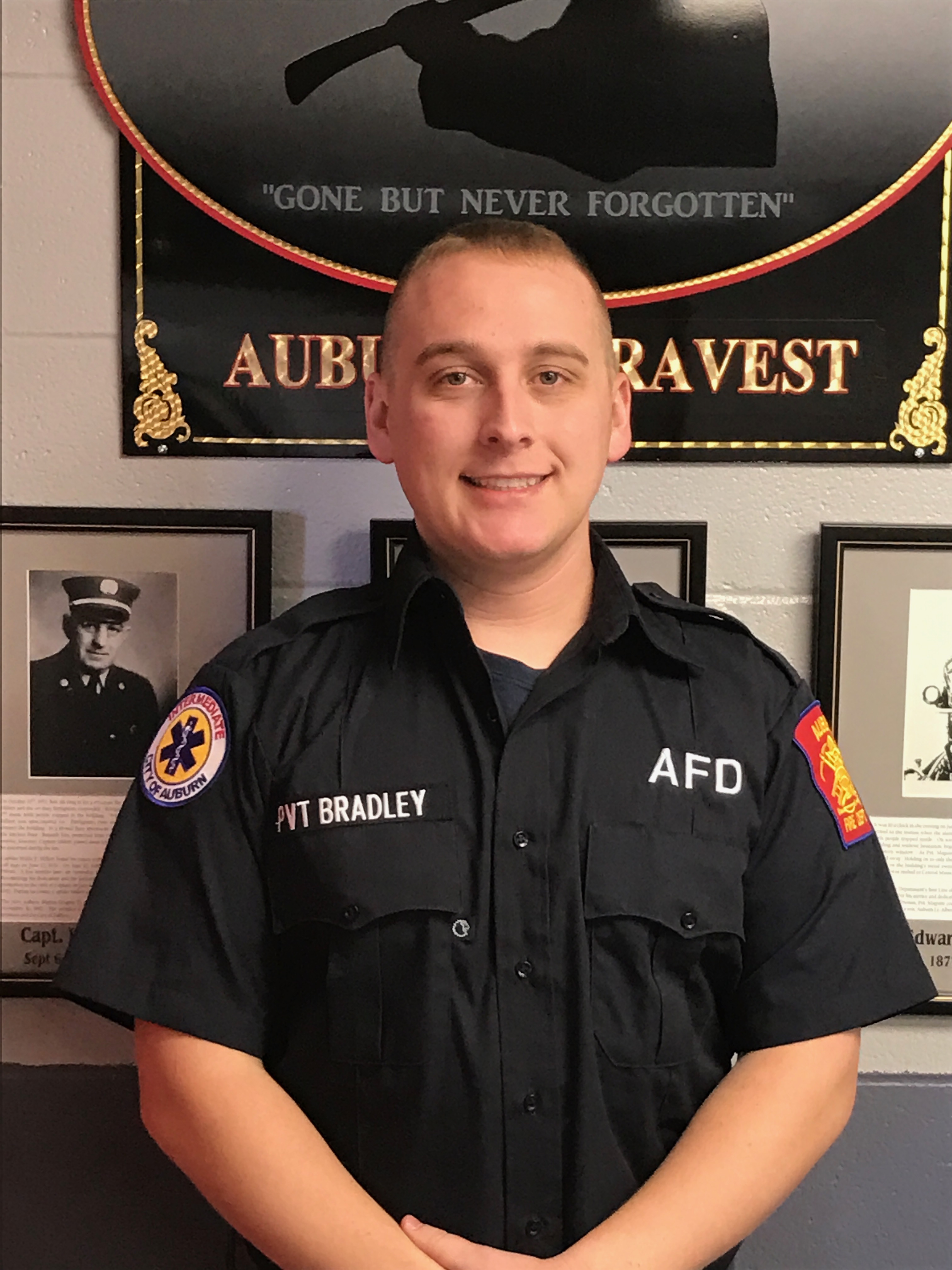 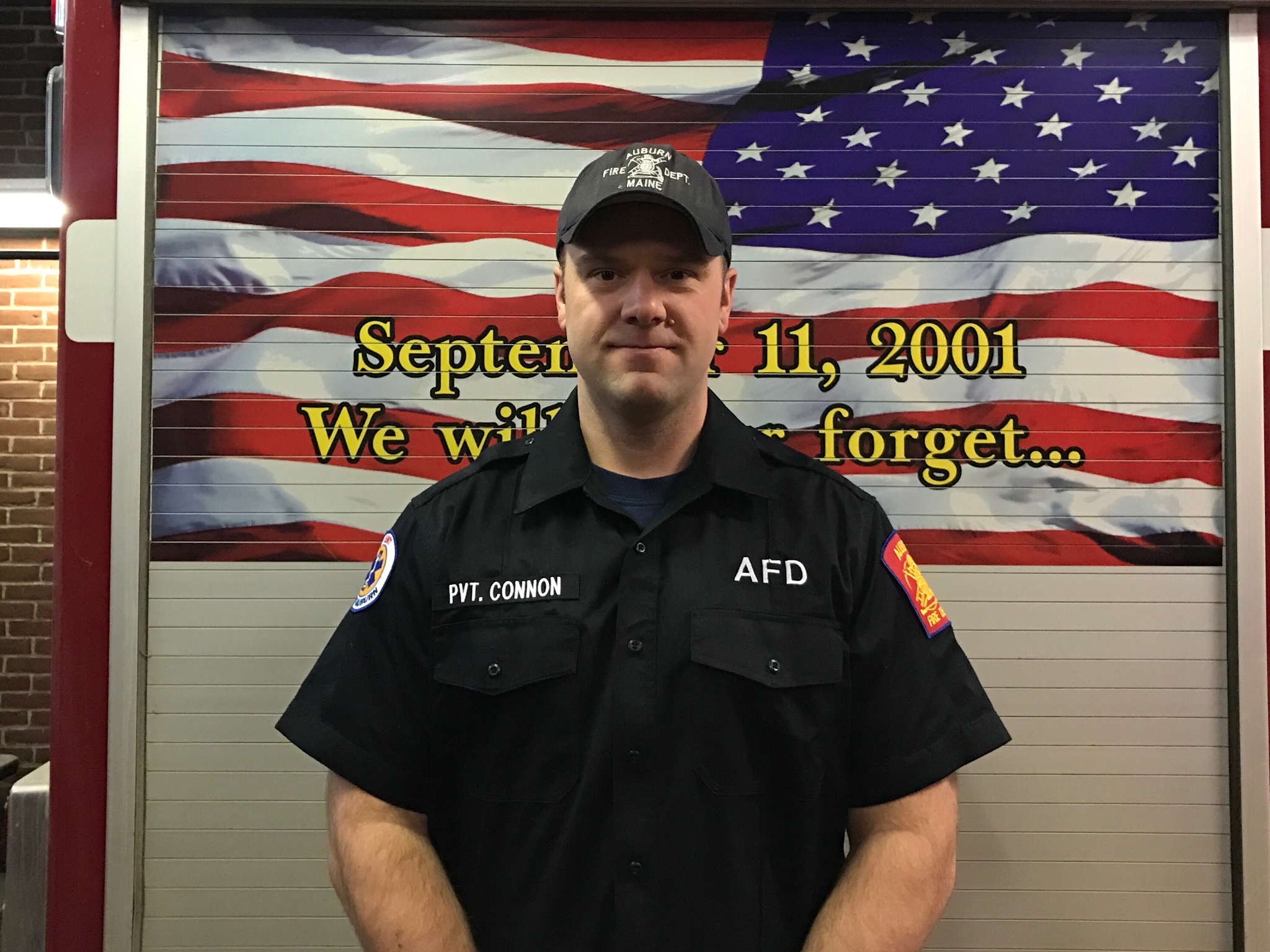
Pvt. Labonte Pvt. Bradley Pvt. Harris Pvt. G. Smith
Engine 2's Crews
   
Lt. Andeasen Lt. Gravel Lt. Therrien Lt. Bouchard
   
Pvt. Braband Pvt. T. Arsenault Pvt. E. Saunders Pvt. Carver
   
Pvt. C. Gabri Pvt. Rickett Pvt. Hillier Pvt. J. Gabri
Rescue 5's Crews
   
Lt. Bolduc Lt. Woodhead Lt. Masselli Lt. Verrill
   
Pvt. Poland Pvt. West Pvt. Tripp Pvt. Monahan

Fire Prevention Officer
Dave O'Connell
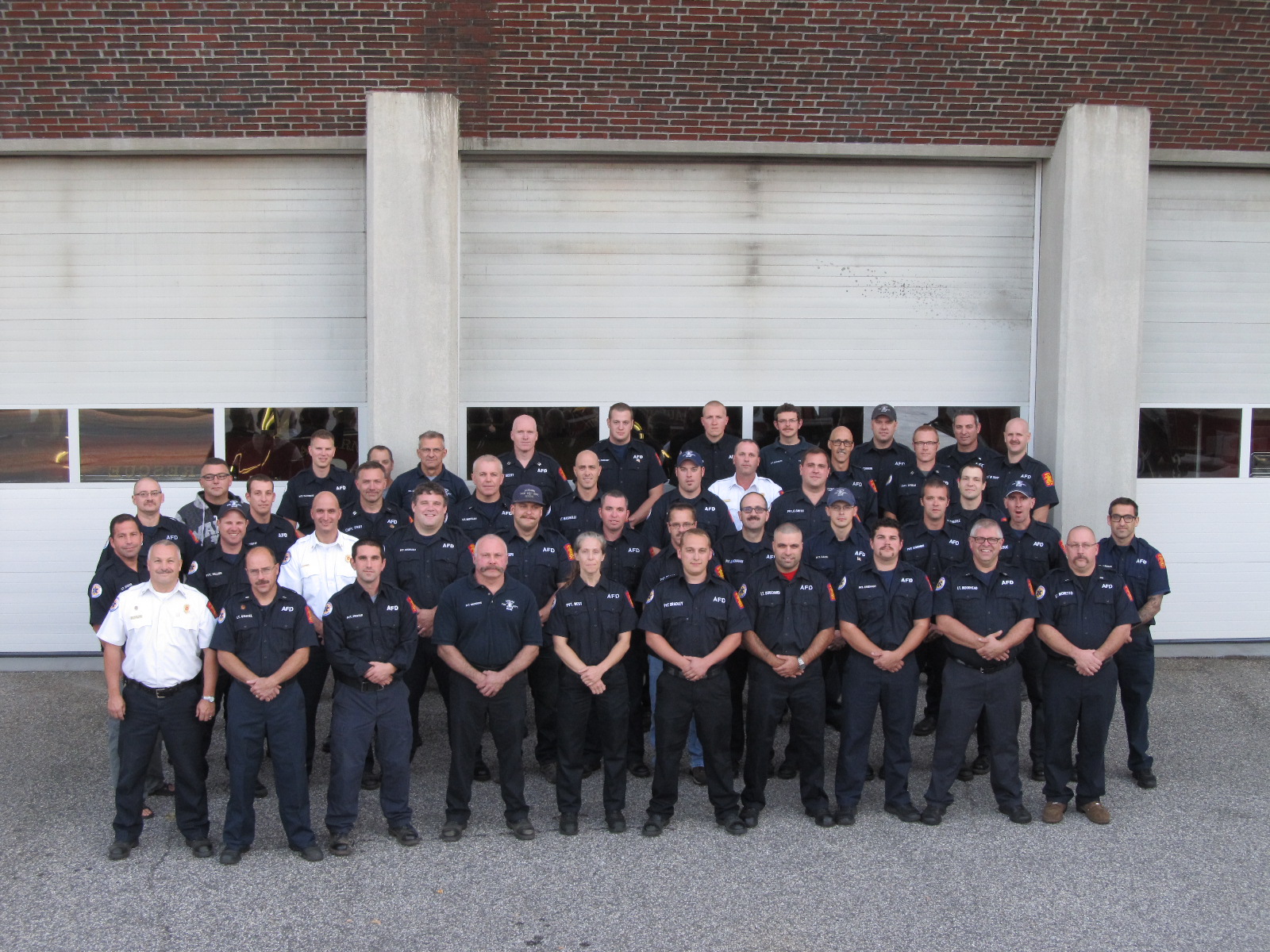
2016 Dept. Photo

|
| Line Of Duty Death |
|
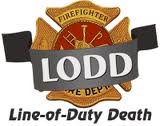
Pvt. Edward “TED” Maguire
May 27, 1877 - June 30, 1936
Engine 1 Box 14
.png)
On June 30, 1936 at 10:00 pm Box 14 was sounded for a structure fire with people trapped at 92-94 Maine St. Pvt. Maguire, who had followed other fireman up a ladder in the front of the building, was about to step off the ladder when it slipped away. Pvt. Maguire stepped onto a metal awning and grabbed the window sill. He shouted for other fireman to raise the ladder but fell before help could reach him. He was rushed to C.M.G. but succumbed to his injuries.
Pvt. Edward “TED” Maguire had been a call-man in the Auburn Fire Dept. since April 14, 1912. He was one of the crew of Engine 1. Pvt. Maguire had a son in the dept as well Lt. Albert Maguire who passed away before him on August 27, 1931.
___________________________________________________________
Deputy Chief Fredrick M. Whirley
July 12, 1903-June 29, 1952
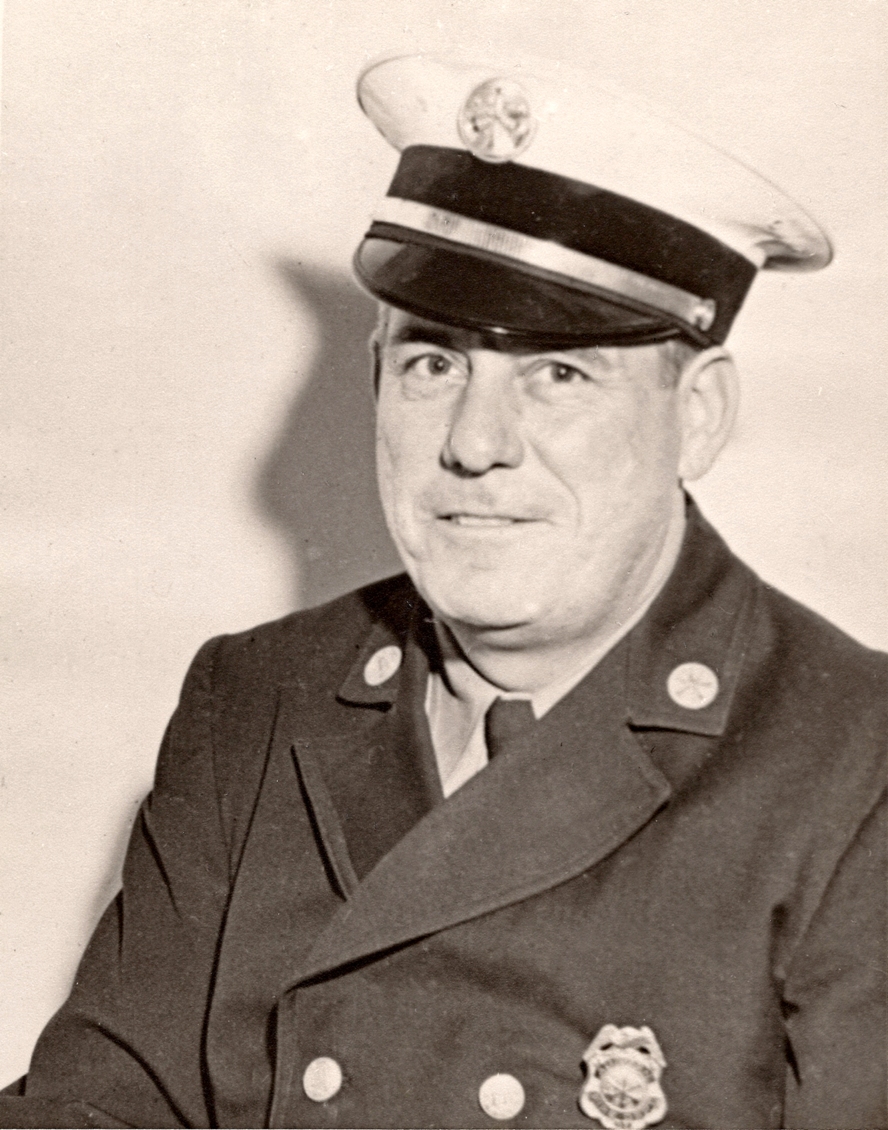
At 7:00 am on June 29, 1952 Deputy Chief Whirley was ending his 24 hour shift. The Deputy Chief was putting away his gear when he suffered a heart attack and collapsed to the floor. The Deputy was rushed to Central Maine General where he was pronounced dead.
Deputy Chief Fredrick M. Whirley entered the Auburn Fire Dept. in 1928 as a volunteer. In 1929 he became a fulltime member and on May 18,1936 was promoted to Captain. He was promoted to Deputy Chief in August of 1945.
___________________________________________________________
Captain Willis F Millett
September 6, 1893 - October 31, 1952

On October 27, 1952 Box 116 rings in for a structure fire at 316 Main Street. Eleven minutes later the fire went to a second alarm with reports people trapped inside of the building. There are conflicting stories on how and when Captain Millett got into the second floor apartment to rescue a little girl. However, the fireman on scene suddenly realized that Capt. Millett was missing and Pvt. Poto, Pvt. Tapley and the city electrician entered the second floor apartment to search for the captain. Upon doing their search they were able to locate the unconscious captain that was behind the kitchen door. Once the wooden door was forced opened and they located and removed both the captain and the girl. The three man made quick work of removal of the victim and fireman. Through the action of the captain using his body and coat to cover the girl he sacrificed his life but saved the young girl’s. The six year old girl survived while Captain Millett succumbed to his injuries four days later on October 31, 1952. On November 30, 1952 the new fire station in New Auburn was dedicated in his honor.
Captain Millett entered the Auburn Fire Department as a probationary call-man on June 12, 1929. On May, 12, 1930 he was appointed a permanent position as a private and within the same year was promoted to lieutenant. Captain Millett was promoted to captain on January 17, 1944 which he ended his career as. Throughout his long service to Auburn the captain also served as an acting Deputy Chief and Chief through his career.
For all of those who have and will sacrifice their life for others, god bless and thank you.
___________________________________________________________

|
| Fire Prevention |
|
Fire Prevention Week:
October 3rd to the 9th
The Fire Prevention program is a comprehensive program responsible for fire investigation, enforcement of all fire codes and ordinances, pre-construction plans review, issuance of permits, property inspection, and evaluations of built-in fire protection. It includes chimney, central heating, wood stove and fireplace inspections; and monitoring for carbon monoxide problems. The Fire Prevention Program also sponsors the "Juvenile Firesetter" program and the "Learn Not To Burn" program.
The Auburn Fire Department is constantly trying to reach out to the citizens of Auburn to better serve and protect them. One way that the members do this is by fire prevention events. The fire department offers many activities and prevention programs including tours of the fire stations and appartus, public relation events, building inspections, fire safety seminars, fire drills and an Annual Open House at the Auburn Fire Headquarters.
Some of the safety topics that we talk about are:
Ø Importance of 911
Ø Stop, Drop, and Roll
Ø Change your Clocks, Change your Batteries in your fire detector
Ø Never play with matches, lighters or candles
For additional information about the Fire Prevention Week, what the fire departments offers for fire prevention, or any life safety code questions you can contact the Becky, the Fire Planner at 207-784-5433 ext. 22.
 .jpg)
Sparky is teaching the young children all about fire safety as Pvt. Martin, Captain Flanigan, Lt. Pray (Left to Right)
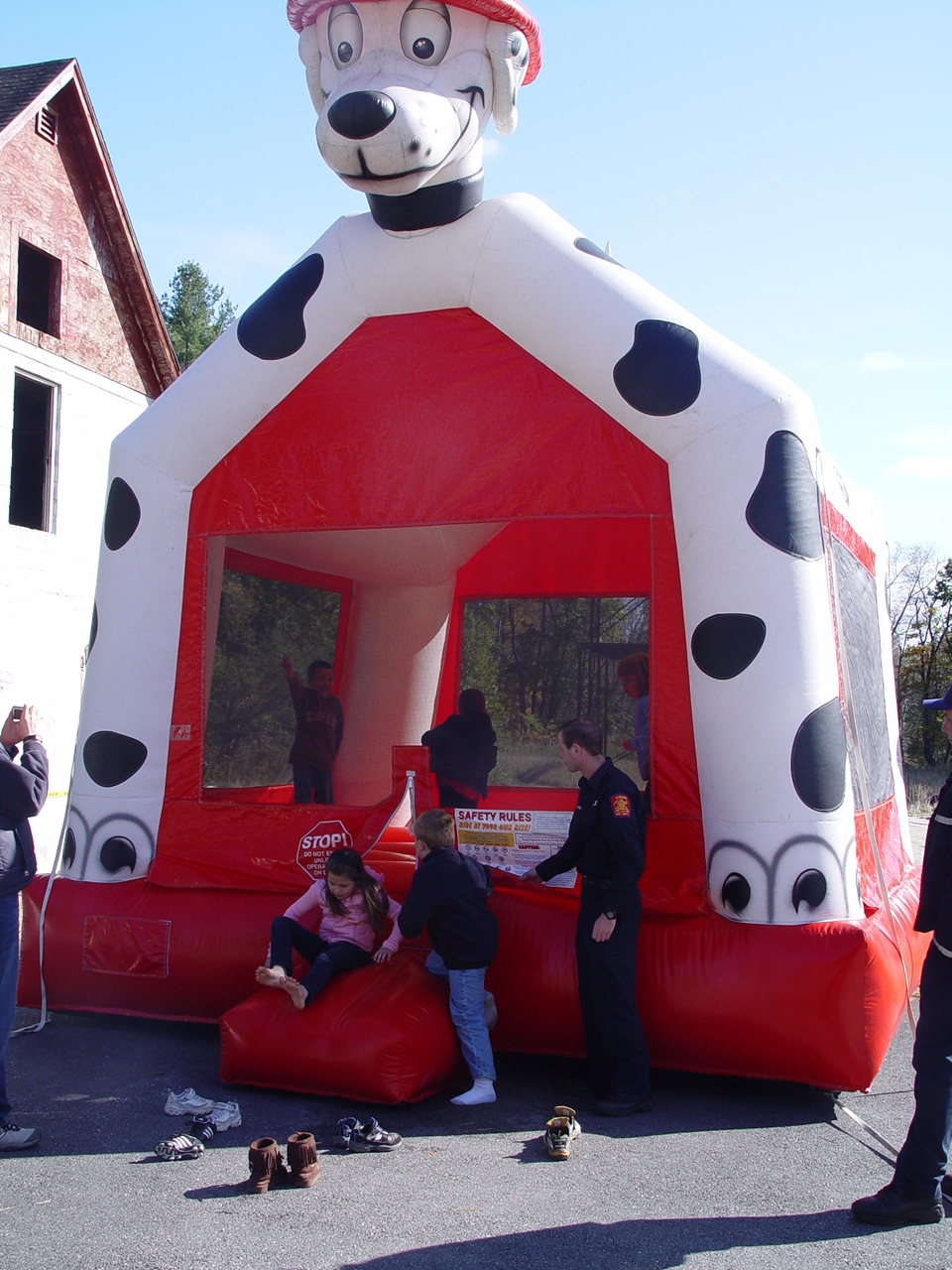
Pvt. Hillier educates the children at the 2009 Open House at Fire Headquarters
|
Page Last Updated: Jun 01, 2016 (10:34:30)
|


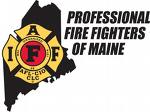




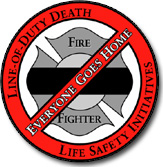

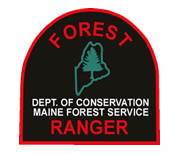


.jpg)













































































.png)




.jpg)

